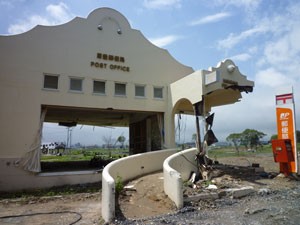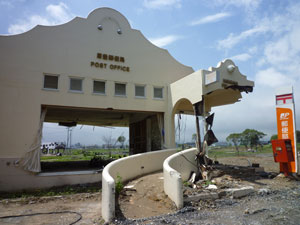The Association for Aid and Relief (AAR) Japan reports that they are providing supplies (e.g., cookware, dishes, cleaning/laundry supplies, cupboards, tables, etc.) to approximately 17,500 households living in temporary housing in 13 towns and villages—about half of the affected households in Fukushima Prefecture. As of the end of August, they had reached the following:
- Temporary housing: 5,464 households in Iidate, Shinchi, Soma, Minamisoma, Tomioka, Kawauchi, Kagamiishi, Nishigo
- Leased housing: 6,636 households in Soma, Minamisoma, Tomioka, Kawauchi
One recipient of AAR’s support was Kimiko Sugimoto, whose lived in Tomioka prior to the disaster. She first moved into a shelter at a gymnasium near her home, but following the accident at the nuclear plant they were bused to a shelter in Koriyama. She and her husband are now living in a temporary home in the Ippongi section of Yabuki, in central Fukushima Prefecture. They were allowed to go back to their home to retrieve belongings, but the radiation readings inside and outside of her home were high and so they only stayed for about 40 minutes and could not bring everything they needed. When asked if they needed anything, she replied that for about 15 days after they evacuated, they were not able to get much to eat, so her appetite had disappeared. “More than that,” she continued,”when I want to talk to someone, there is nobody here; when I’m feeling down, none of my friends from Tomioka are here to talk to. . . . I guess we’ll never be able to go back to Tomioka, will we.” Since the temporary housing brings together people from throughout the prefecture, the people are losing their ties to their old neighbors, and are feeling isolated.
 Another of the AAR relief recipients is 74-year-old Yoichi Suzuki, whose home in the Isobe section of Soma—less than 1,000 feet from the ocean—was swept away by the tsunami. Fortunately, Mr. Suzuki was in Tokyo at the time of the disaster, and his family was spared as well. Since March, he has been living in shelters and now in temporary housing. He told the AAR staff, “When we arrived at our temporary home, we didn’t have anything to wear or eat, so the items we received from you helped us so much. No matter how many times I say it, I can’t thank you enough.” Mr. Suzuki is now serving as a leader at the housing unit, trying to restore the local connections through dinner parties, organized workouts, and other events in order to relieve the type of stress that Mrs. Sugimoto described.
Another of the AAR relief recipients is 74-year-old Yoichi Suzuki, whose home in the Isobe section of Soma—less than 1,000 feet from the ocean—was swept away by the tsunami. Fortunately, Mr. Suzuki was in Tokyo at the time of the disaster, and his family was spared as well. Since March, he has been living in shelters and now in temporary housing. He told the AAR staff, “When we arrived at our temporary home, we didn’t have anything to wear or eat, so the items we received from you helped us so much. No matter how many times I say it, I can’t thank you enough.” Mr. Suzuki is now serving as a leader at the housing unit, trying to restore the local connections through dinner parties, organized workouts, and other events in order to relieve the type of stress that Mrs. Sugimoto described.
AAR has been working with members of the Tomioka Shopping Center Cooperative who evacuated to sites around the country due to the nuclear plant crisis, but have returned to help distribute relief supplies—a major undertaking since there are so many homes in need of assistance in Tomioka. It had also been difficult to find storage space for supplies, but the cooperative members were able to locate two warehouses for AAR to use. In Yabuki, AAR has been working with the town hall and chamber of commerce to distribute supplies. Local officials and chamber representatives realized that the needs of each household would differ, so they created a list of available supplies, visited each home, and let them choose what items they needed

